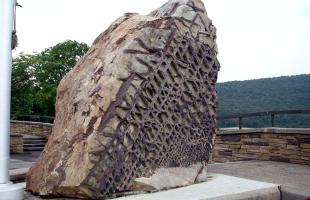Copy Link
Add to Bookmark
Report
Cider Digest #0632

Subject: Cider Digest #632, 11 December 1996
From: cider-request@talisman.com
Cider Digest #632 11 December 1996
Forum for Discussion of Cider Issues
Dick Dunn, Digest Janitor
Contents:
Re: Cider Digest #631, 9 December 1996 (Scott Bauer)
Keeving, defecation, and sweet cider (Andrew LEA)
Send ONLY articles for the digest to cider@talisman.com.
Use cider-request@talisman.com for subscribe/unsubscribe/admin requests.
When subscribing, please include your name and a good address in the
message body unless you're sure your mailer generates them.
Archives of the Digest are available for anonymous FTP at ftp.stanford.edu
in pub/clubs/homebrew/cider.
----------------------------------------------------------------------
Subject: Re: Cider Digest #631, 9 December 1996
From: Scott Bauer <sbauer@ccnet.com>
Date: Mon, 9 Dec 1996 23:41:41 -0800 (PST)
RESULTS OF A CIDER TASTING
On Dec. 8th I presided over a casual cider tasting party. There were
eight participants, tasting a total of 11 different commercially available
ciders (all that I could get my hands on for a home tasting in the San
Francisco Bay Area's Eastern regions :- ) The tasting was double-blind,
so that the results would not be inadvertantly influenced. None of the
participants were more than casual cider drinkers; one was a home brewer
(who has not done Cider, however.)
The evaluation sheets used a 5 point scale (1 best, 5 worst) and included
space for comments. The tasting was done in a series of three "flights",
which coupled with the casual atmosphere probably led to the last flight
being rated more highly, as the ef fects of the cider were starting to
take hold. :-) The results were as follows (ranked from last to first;
notes are mine unless otherwise mentioned):
BLACKTHORN DRY (Taunton Cider Co. Ltd. -- Somerset, England). Avg score
was 4.3, with a range from 3 down to 5. 5.8% alcohol. Actually, this
result should probably be thrown out -- I somehow managed to bring along
an old bottle of Blackthorn for the ta sting, and it was not showing its
age at all well (flat, no apple taste or scent, etc.)
WILD COUNTRY NORMANDY (C. L. L. F. -- Livarot, France). Avg. score was
3.6, with a range from 2 - 5. 3 % alcohol. One of 2.5 French cidres in
the tasting (see below.) This cider has a nice, medium-amber color, and
had a slight head when poured. This suggested good things ahead, but was
a disappointment overall. Not much scent, and very little apple flavor.
WYDER'S DRY DRAFT (Wyder's Beverages Canada Ltd. -- Calgary, Alberta,
Canada). Avg score was 3.4, range 2 down to 5. 5% alcohol. Wyder's has
a very light color, almost clear. A very slight apple aroma on the nose.
Light carbonation. I thought the t art taste was rather nice on the
tongue, but agreed with others that there was a lingering aftertaste that
was "off", and brought down the score.
HORNSBY'S DARK & DRY (E. & J. Gallo -- Modesto, CA.). Avg. score 3.3,
range 2-5. 6% alcohol. Very dark color (not as dark as a Stout, but
pretty close). Slight head in the glass. Lots of carbonation. Not much
aroma; some apple taste, with some carmel notes to it.
CIDER JACK (American Hard Cider Co. -- Pond Lake, Middlebury, VT.) Avg.
score of 3.1, range from 1 to 4. 6% alcohol. This is a mixture of both
American and French ciders. It has a nice, dark-hued amber color. Lots
of carbonation, very effervescent on the tongue. I thought it had a nice,
tangy apple taste on the tongie, but felt it was too sweet (the sweetness
lingering long after the apple had faded.) Still, as a "dessert" cider it
might work very well.
ACE (California Cider Co. -- Graton, CA.). Avg. score 2.7, range 1-5. 6%
alcohol. A cider that brought out a large range of opinions. I felt it
had a bitter taste that detracted from the overly subtle apple flavor;
others thought the flavor was subtle and complex.
WOODPECKER (Bulmer's -- Hereford, England). Avg. score 2.6, range 1-4. 4%
alcohol. Light-Medium amber color. Nicely carbonated. A very nice apple
aroma and flavor. I scored this higher (not surprisingly, since it's my
favorite "sweet" cider.)
VERMONT DRAFT DARK & DRY (Vermont Hard Cider Co. -- Proctorsville, VT.)
Avg. score 2.5, range 1-4. 5% alcohol. The "private label" brand of the
Beverages and More chain, as well as the Trader Joe's chain; I believe
that this is better known under its o wn label of Woodchuck. I rated this
one of the worst in the tasting (just shows what I know :-) -- no apple
aroma or taste to speak of, too sweet for a "dry" cider, with a funny
after-taste.
STONEHOUSE COLD FILTERED (Inch's Cider Ltd. -- Devon, England). Avg score
2.4, range 1-4. 5.9% alcohol. Despite being labeled as "cold filtered"
this is an excellent cider. Very light color. Subtle apple aroma, nice
crisp apple taste. The best of the dry ciders at the tasting.
CIDER FRENCH SPARKLING (Herout Fils -- Auvers, La Manche, France). Avg
score 2.2, range 1-3. 2.2 % alcohol. Light yellow color. Slight head
when poured. Fruity aroma, but seemed citrusy (rather than apple.)
Sweet, faintly apple flavor. Would make a fair Summer quencher; I rated
this much further down in the pack.
VERMONT DRAFT AMBER. (Vermont Hard Cider Co. -- Proctorsville, VT.) Avg.
score 2.0, range 1-3. 5% alcohol. The sweeter sibling of the DARK & DRY
above. Medium dark color, lots of carbonation. No aroma to speak of, but
a nice, sweet apple taste that l ingers on the tongue. A slight "off"
taste at the very end (but much less so than the DARK & DRY.)
Scott Bauer sbauer@ccnet.com OR sbauer@mail.contra-costa.lib.ca.us
Contra Costa County Library
------------------------------
Subject: Keeving, defecation, and sweet cider
From: Andrew LEA <101750.3071@CompuServe.COM>
Date: Tue, 10 Dec 1996 15:28:50 -0500
In response to the last two weeks discussion, the only way I know of to
produce a sweet naturally conditioned cider is by 'keeving' (English) or
'defecation' (French), or some variant thereof, such as repeated racking
until the nutrients can no longer support yeast growth, or by going to such
a high alcohol that the yeast can't cope (but that latter isn't cider,
which in my book can never have an alcohol greater than 8%!). I've been
doing keeved cider on the 50 litre scale for the last three years, and it's
very timely to discuss it now since I've had a batch going now for just one
week and I'm waiting anxiously to see if it will keeve properly or not.
It's very traditional in both England and France. Here's how I do it.
First of all you need to start with apples low in nitrogen, to secure a
very slow fermentation. So try to choose those from mature trees which
aren't over-fertilised. Second you need a fairly high pH juice (ca 3.8 -
4) so low-acid apples are what you need. I use proper English/French
bittersweet cider varieties, but I appreciate these are almost unobtainable
for people in North America. Third you need lots of pectin, so you must
mill the fruit and let the pulp stand in the cold for at least 24 hours
before you press it. This allows soluble pectin to leach slowly out of the
cell walls. Now press the pulp and collect the juice in an absolutely
clean tank. Add 500 ppm (5 grams per 10 litres) of calcium chloride (NOT
chlorate, please, as someone wrote. That will poison you!). Or you can
add about 400 ppm of common salt (sodium chloride) and 300 ppm calcium
carbonate (precipitated chalk), which does the same thing. Cover the tank.
The keeving now takes about a week to 10 days. Keep the temperature about
5 - 10 C (it is, here in England, now). What happens is that the natural
pectin methylesterase in the apples slowly demethylates all that lovely
pectin, forming polygalacturonic acid. That complexes with the added
calcium to form a calcium pectate gel. The chloride helps to suppress the
natural activity of the yeast. However, as the yeast slowly begins to
ferment, gas bubbles get incorporated into the gel and it rises to the
surface as the 'chapeau brun'. The heavier pectate material falls to the
bottom. If you're lucky, you're then left with a brilliant clear liquid in
between a top cap and a bottom sludge. Now you filter off the clear
liquid into another clean fermentation tank. Add about 100 ppm of sulphite
- - at pH 3.8 - 4 this will inhibit the acetic acid bacteria but still allow
wild yeasts to go on working. Fit an airlock. Monitor the gravity weekly.
You will now get a very slow fermentation which is carried out only by wild
yeast (Kloeckera apiculata then succeeded by wild Saccharomyces). Much of
the nitrogen (asparagine) is taken away in the 'chapeau brun', so the
gravity should only drop slowly. Last year I had a starting gravity of
1.065 on the 22nd November. It dropped steadily to 1.030 by 7th March.
OK, you brewers, this is unbelievably slow, but it's the way you have to do
it! At 1.030 you do the first racking. Re-fit the airlock and monitor
some more - if dropping at more than two degrees a week you'll have to rack
again. Mine stabilised at about 1.025 and I then bottled it (crown caps)
in the first week of April.
Once in bottle it continues to ferment very slowly until the CO2 builds up
and then it stops. The initial flavour is heavily dominated by ethyl
acetate and can be undrinkable. But by about June the ethyl acetate is
hydrolysed / resorbed and the cider is beginning to mature. Of course it
will contain a natural yeast deposit but if you put the bottles in the
fridge for a couple of days before drinking that will settle it and it
won't be too 'popgun' when you open it.
I realise that most of you out there will think this is impossibly tedious
but it's traditional, it works and it can produce superb results. Many
commercial French ciders are now factory made like this, except that they
add a unique pectin methylesterase made especially for them, they
centrifuge the ciders if they're fermenting too fast, and it's all done in
huge refrigerated tanks at 4 C.
If you want to know more see my web page articles at
http://ourworld.compuserve.com/homepages/andrew_lea
Have fun and let me know if any of you succeed. If the French and the
Brits can do it, I'm sure you can!!
Andrew Lea, Oxford, UK.
------------------------------
End of Cider Digest #632
*************************





















